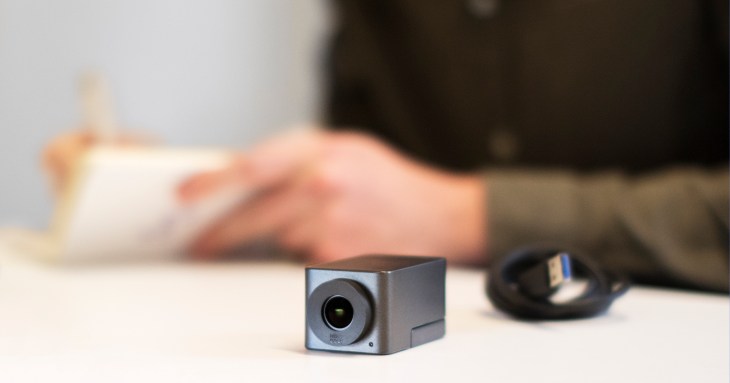Huddly, a Norway-based startup that sells a camera targeting remote company meetings (or huddles) and is building out what it describes as a “computer-vision” platform to help managers glean better data from those meetings, has raised $10 million in Series B funding. It brings total raised to $20 million, not including a $3 million research grant.
The company’s first hardware and software product, dubbed Huddly Go, which I understand is also now manufactured in Norway after being brought back from China, offers various video collaboration-friendly features, such as 16 megapixels, an ultra-wide lens, dynamic light optimization and “smart” zoom.
“Short term there is an enormous opportunity for a better camera that simply works,” Thomas C. Holst, CEO of Huddly, tells me. “Today, most cameras don’t see enough of the scene. A camera that doesn’t see all of the people in a huddle room is hardly useful. We solve that problem. Sometimes you may not want to see the entire space and want to move directly to an area of interest, whether it is people or objects. Huddly can do that with a combination of a very dense image sensor and digital pan-tilt-zoom.”
Huddly says it’s targeting three groups of customers. First are organizations with a distributed workforce that are currently using some form of video collaboration, both at-desk or meeting rooms, and that need a more flexible and cost-effective solution to “video-enable their huddle spaces.” Specifically, they may want to expand the use of video meetings outside formal video meeting rooms. The second are people who use their personal computer or laptop to run group video meetings. Third are companies (think: startups) with a distributed workforce who do daily stand-ups.
Longer term, the Oslo company is building out the computer vision and machine learning capabilities of the Huddly platform, which is designed to help managers get better visual feedback on meetings and the contributions made by team members. Put over-simply, the software can see and understand what is happening in a room (using deep learning algorithms) and even react accordingly. If that all sounds a bit Big Brother-ish, here are some use-cases in Huddly’s own words:
For example, the state of room (is it full? is it well lit?), number of people around (the camera has a 150-degree field of view, so everyone can fit in), people’s engagement levels, how much they talk, what they talk about, objects they show to each other, things they present at meetings etc. All of it constitutes important information executives can use to monitor the state of their meetings and make decisions, and this is where Huddly fits in with the software platform we develop on top of our camera.
